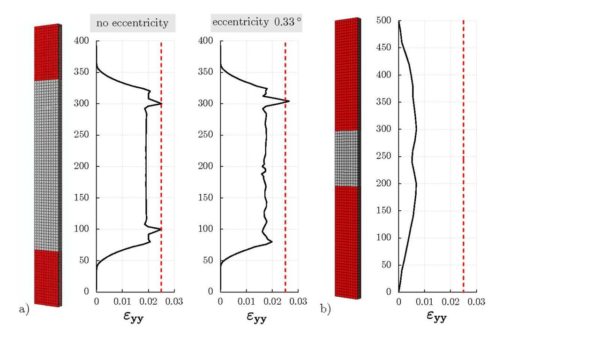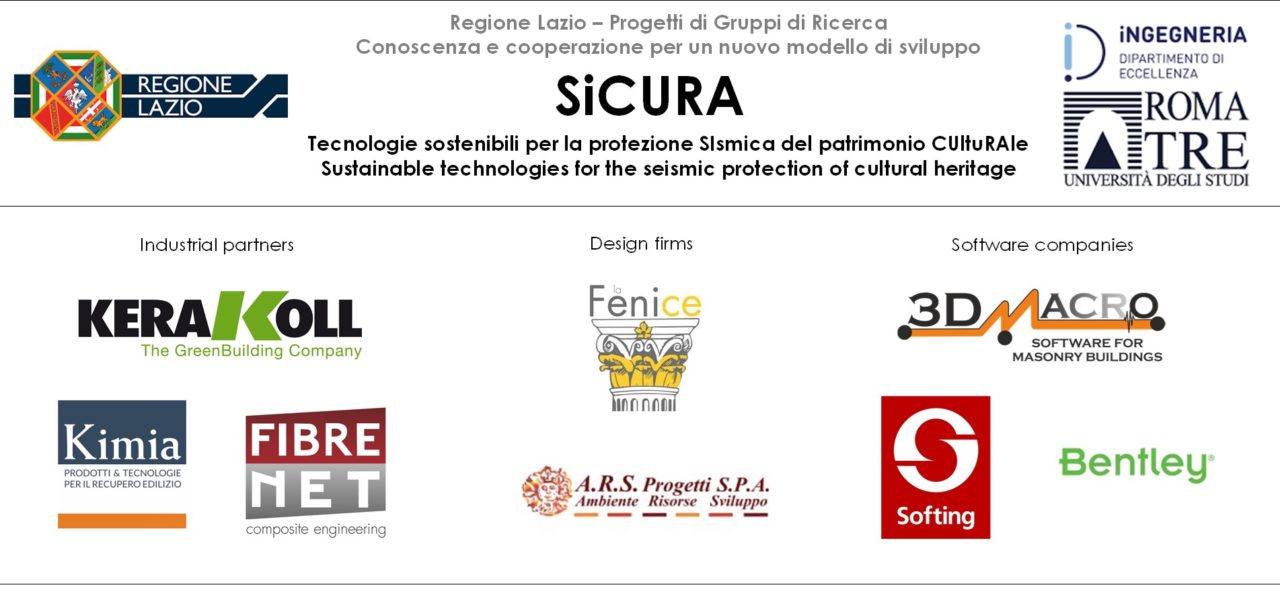Design methods and structural assessment tools
Based on the experimental tests performed in the laboratory and on full-scale prototypes, analytical formulations were developed for estimating the ultimate flexural capacity of masonry walls reinforced with TRM composites under out-of-plane loads. These formulations have been designed for professional practice, for the design and assessment of reinforcement applications and seismic retrofitting. They have been validated on the basis of the experimental evidence available in the scientific literature and calibrated to guarantee the safety requirements provided by the Italian (NTC 2018) and European (Eurocodes) standard codes.
The analytical relationships proposed represent a practical tool for practitioners to design and verify the interventions in order to optimize the effectiveness and the cost.
On the basis of the experimental results, and in particular of the tensile tests on composite samples carried out within the project, as well as of the results available in the literature, a non-linear constitutive bond relationship, useful for the description of the complex behaviour, was developed of the TRM systems The phenomena of sliding between fabric and matrix and of the cracking of the matrix under tensile loading were simulated.
Calculation methodologies based on a modeling approach for “macro-elements” have also been defined, which are particularly versatile for performing analyzes of complex and large structures. These methodologies have been used for the simulation of the stress transfer mechanism from the masonry substrate to the TRM reinforcement, with respect to both plane and curved (concave or convex) substrates. The former ones are representative of reinforcements applied to walls or facades of buildings, whereas the latter ones of intrados or extrados surfaces of arches and vaults.

